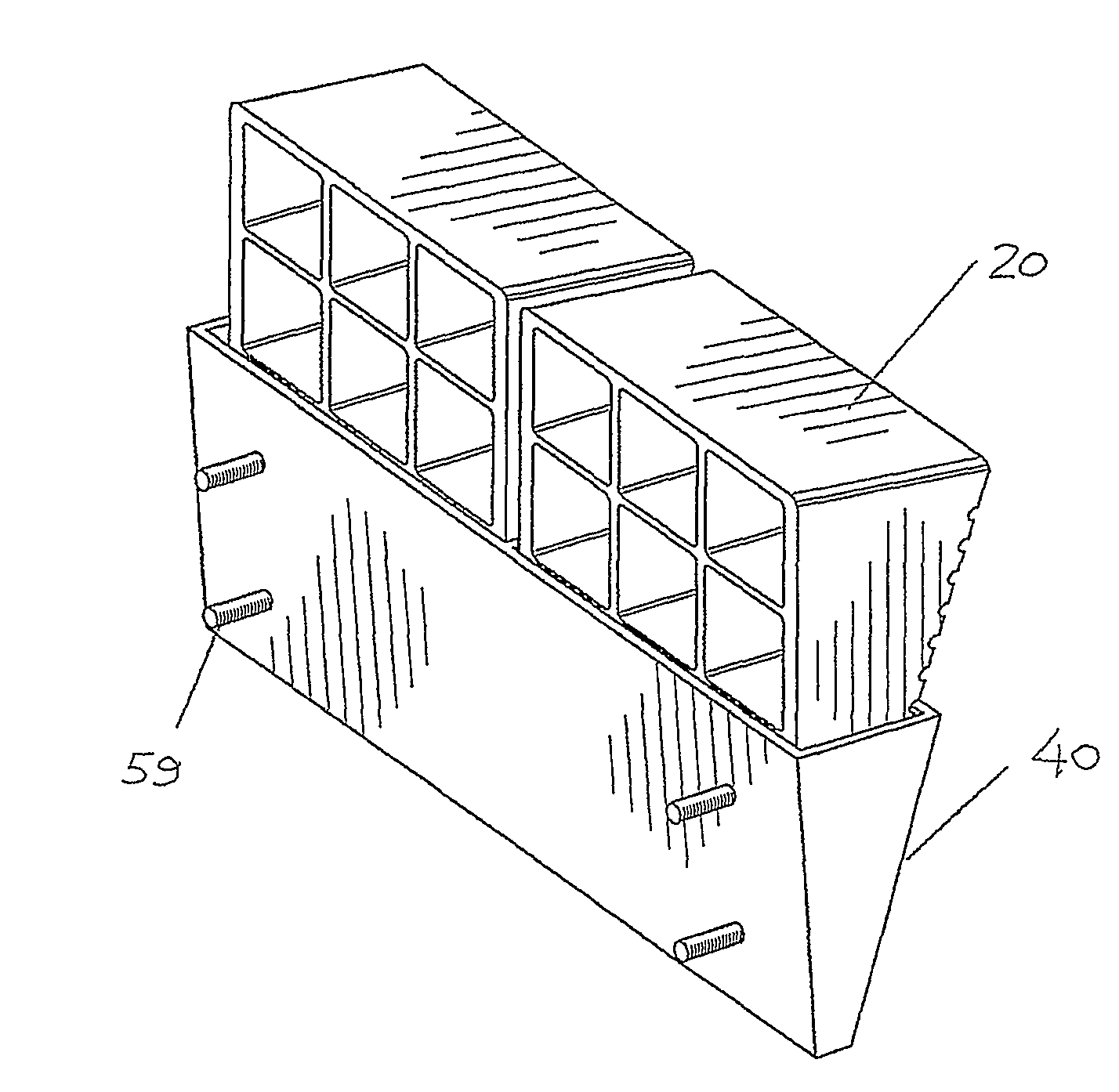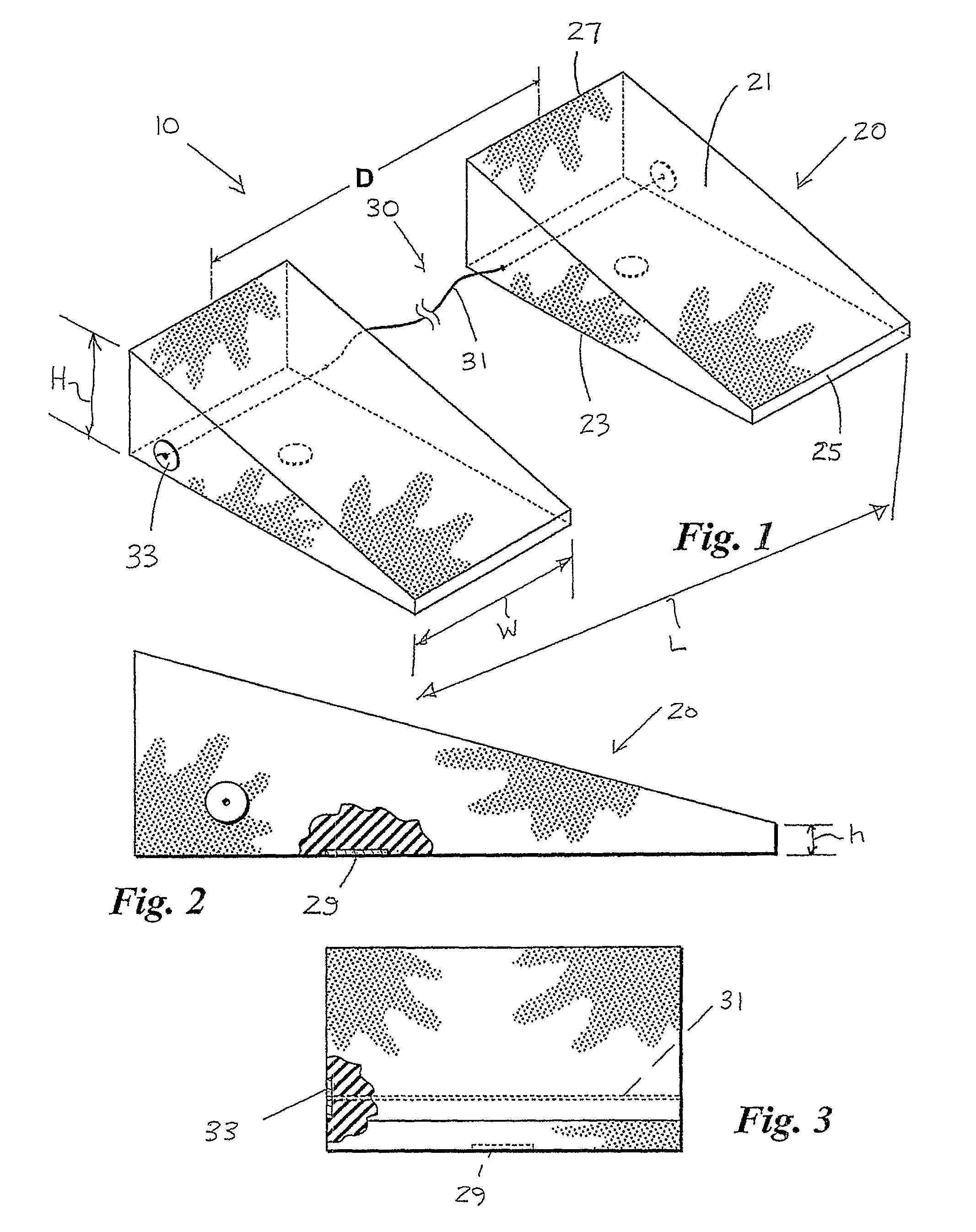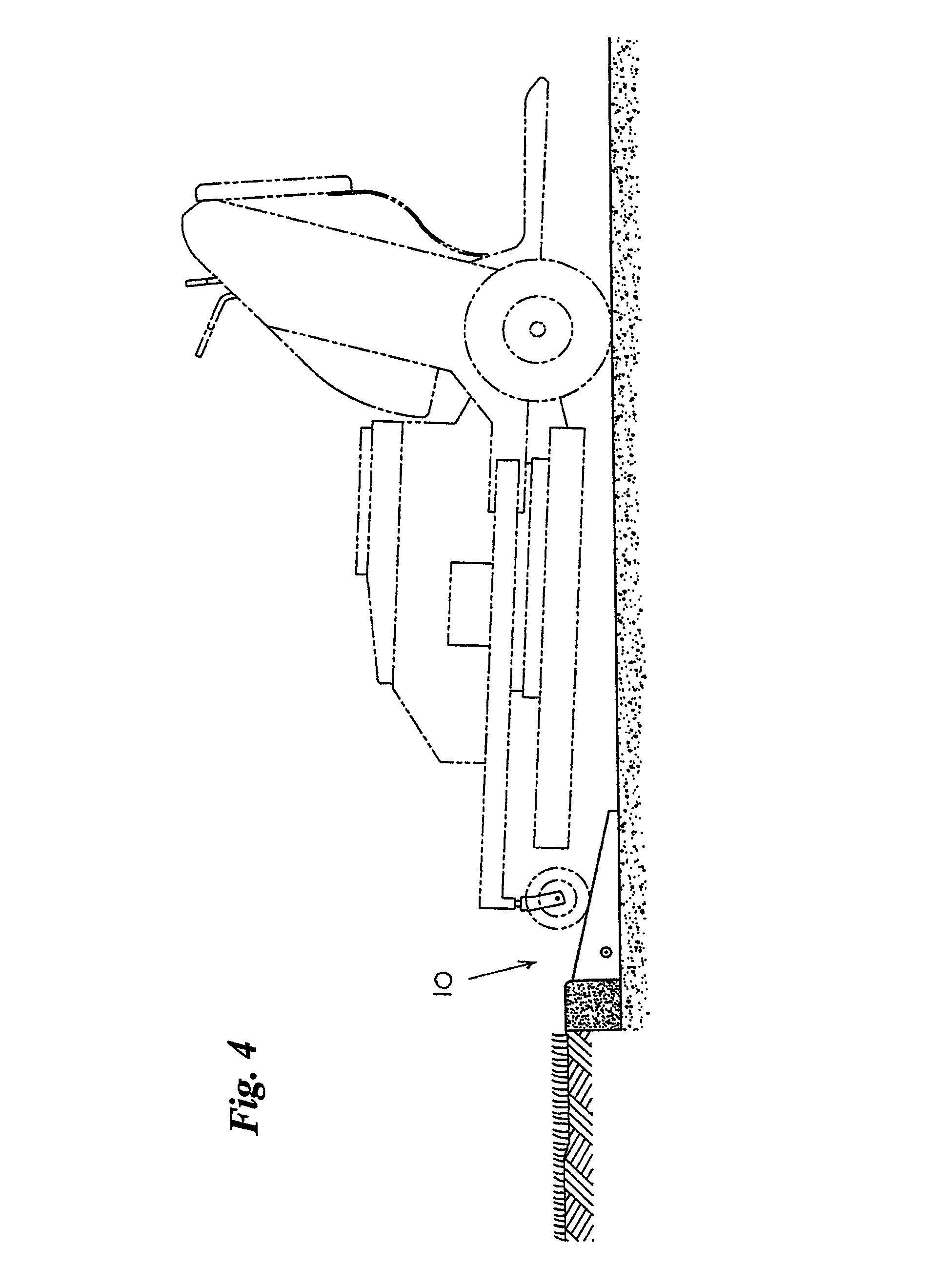Portable curb ramp
a curb ramp and portability technology, applied in the field of portable ramps, can solve the problems of increased wear and tear of equipment, increased risk of serious injury for users, and damage to equipment, and achieve the effect of convenient storag
- Summary
- Abstract
- Description
- Claims
- Application Information
AI Technical Summary
Benefits of technology
Problems solved by technology
Method used
Image
Examples
Embodiment Construction
[0036]Referring first to FIG. 1, a portable ramp 10 is illustrated that includes a pair of rubber ramps 20 that are connected to one another by a flexible tether 30. Each ramp 20 has a sloping contact surface 21 on its top side, a planar contact surface 23 on its bottom side, and two opposing and substantially parallel ends 25 and 27. Sloping contact surface 21 is preferably a substantially smooth surface having a slope of about 20°. Planar contact surface 23 may include a magnet 29 located residing within an interior portion of the ramp 20. End 25 has sufficient height to receive yet partially slow an oncoming piece of wheeled lawn equipment. About a ½-inch height “h” has been found to be effective for this purpose. The shape of end 25 also provides for improved resistance to wear-and-tear caused by wheeled lawn equipment as the wheels of that equipment come into contact with ramp 20. End 27 serves to compensate for the high centering of walk-behind wheeled lawn equipment by exposi...
PUM
 Login to View More
Login to View More Abstract
Description
Claims
Application Information
 Login to View More
Login to View More - R&D
- Intellectual Property
- Life Sciences
- Materials
- Tech Scout
- Unparalleled Data Quality
- Higher Quality Content
- 60% Fewer Hallucinations
Browse by: Latest US Patents, China's latest patents, Technical Efficacy Thesaurus, Application Domain, Technology Topic, Popular Technical Reports.
© 2025 PatSnap. All rights reserved.Legal|Privacy policy|Modern Slavery Act Transparency Statement|Sitemap|About US| Contact US: help@patsnap.com



